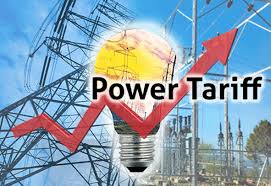SRINAGAR: In reference to the tweet by Altaf Bukhari regarding high Electricity bills being raised by Power Development Department in rural and urban areas, the point-wise response is given below with facts and figures:
1. The electricity tariff rates in J&K are set by the Joint Electricity Regulatory Commission (JERC), an independent body. These rates are meticulously calculated to cover costs such as power purchase, genuine transmission expenses, staffing, and maintenance, to ensure that consumers are charged fairly. It is pertinent to mention that in J&K, the electricity tariff being charged from consumers stands as one of the lowest across the country.
2. The metering percentage is very low, particularly in the Kashmir region where only 32% (318605 no.) of residential consumers are metered and are being billed as per actual metered consumption against the total residential consumer base of 982125.The remaining 68% of residential consumers (663520 no.) are charged on a flat-rate (fixed charges) basis, which often does not correspond to their actual connected load or consumption. This discrepancy leads to a significant gap in energy accounting, resulting insubstantial losses for DISCOMs, particularly during peak demand periods. Recent surveys and enforcement drives have revealed instances where consumers have declared much lower connected loads than their actual usage, exacerbating these losses.
3. DISCOMs in J&K are actively participating in the Government of India’s RDSS scheme to improve power supply quality and reliability by strengthening supply infrastructure. Conditional financial assistance is provided under this scheme based on achieving specific targets to reduce Aggregate Technical & Commercial (AT&C) losses and bridge the gap between Average Cost of Supply (ACS) and Average Revenue Realized (ARR). Key initiatives under the scheme include achieving 100% smart metering and LT-AB cabling, aimed at improving financial sustainability and eligibility for central grants. Intensive enforcement efforts are also essential to combat power pilferage.
4. Accordingly, apart from technological interventions like smart metering and AB cabling, Discoms are intensifying enforcement activities in all areas to check pilferage and book the defaulters under the electricity norms /Electricity Act-2003. These efforts have yielded positive results, with AT&C losses decreasing from 63% in 2021-22 to 44% in 2023-24. Similar progress has been made in narrowing the gap between ACS and ARR. To further reduce losses in unmetered (Flat Rate) areas, the following measures have been taken:
I. Calibrated rationalization of load as per actual electricity usage/connected load following Electricity Supply code regulations, ensuring that no consumer receives high or inflated bill.
II. The JERC has devised flat-rate tariffs so to incentivize consumers opting to switch to metered billing thereby reflecting actual consumption more accurately.
III. Consumers are also counselled and encouraged to opt for metered billing if they find flat-rate charges disproportionate to their consumption.


